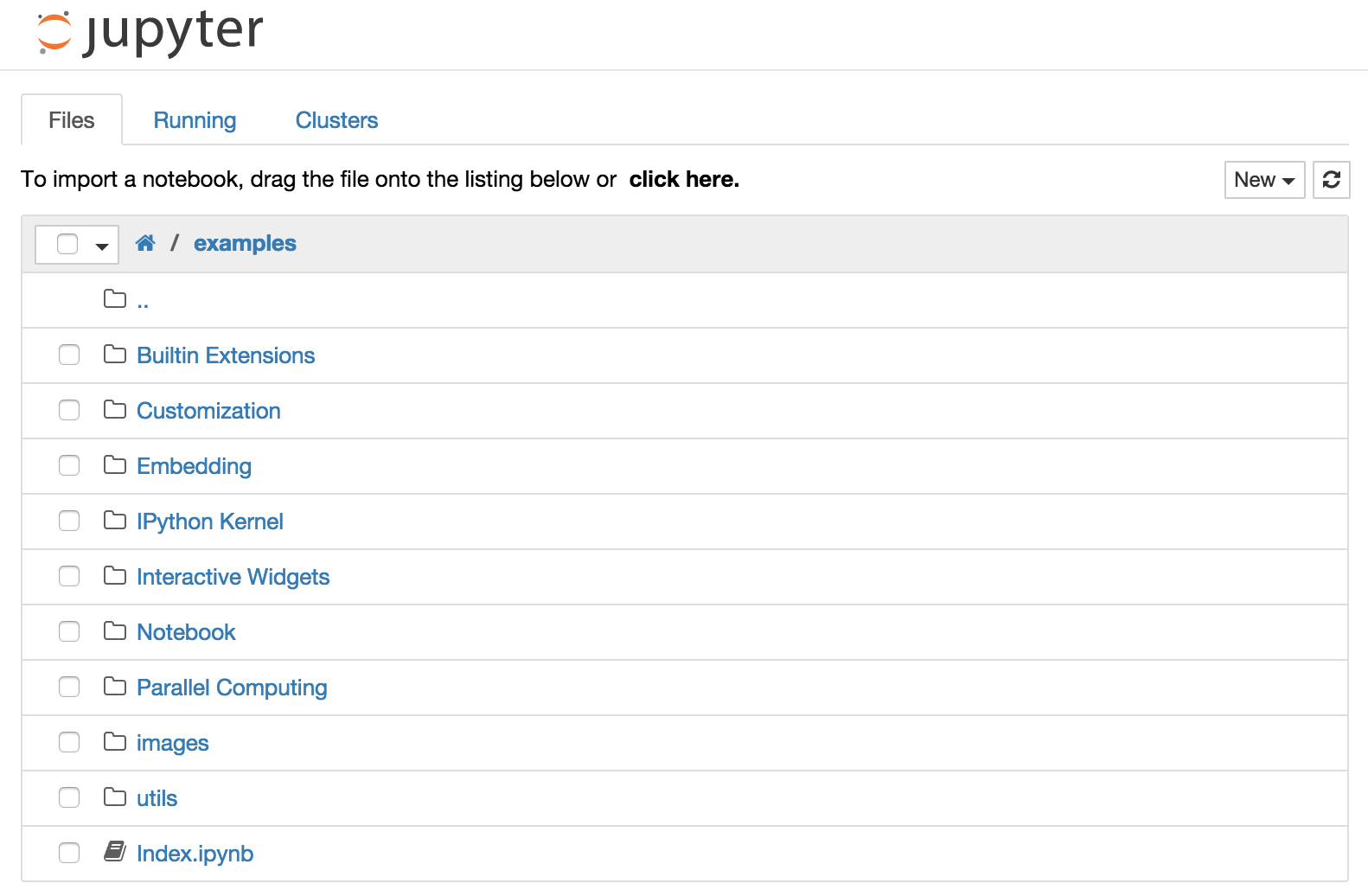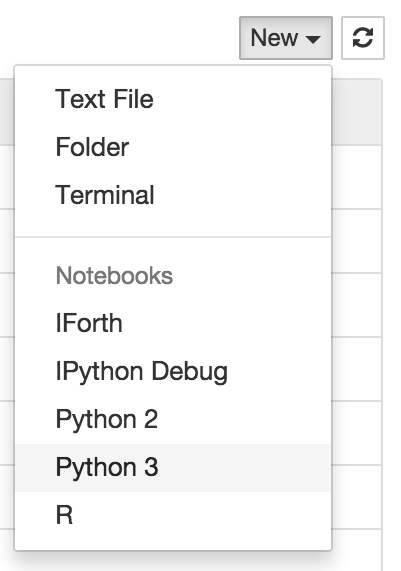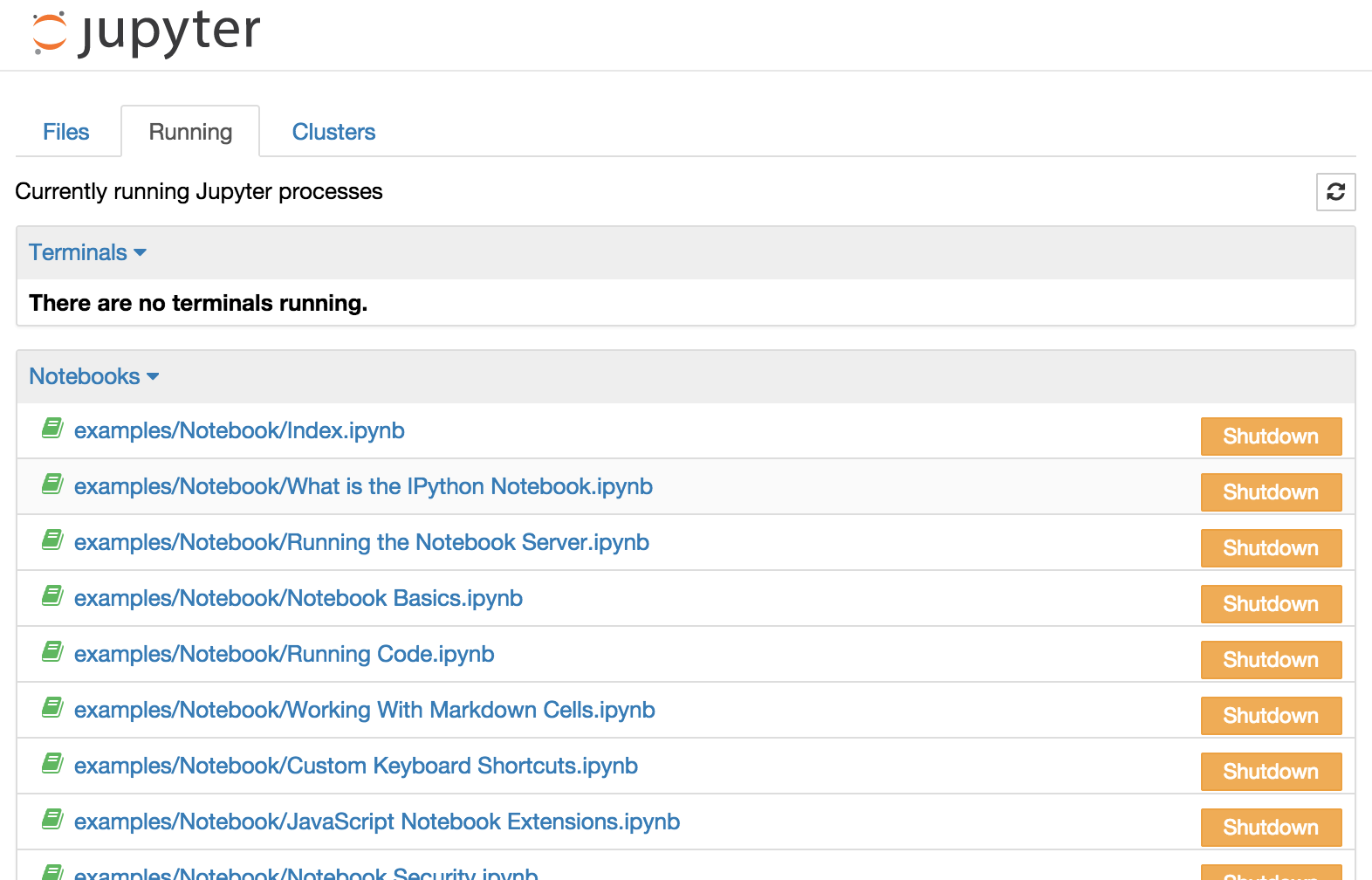Notebook Basics¶
The Notebook dashboard¶
When you first start the notebook server, your browser will open to the
notebook dashboard. The dashboard serves as a home page for the
notebook. Its main purpose is to display the notebooks and files in the
current directory. For example, here is a screenshot of the dashboard
page for the examples directory in the Jupyter repository:

Jupyter dashboard showing files tab
The top of the notebook list displays clickable breadcrumbs of the current directory. By clicking on these breadcrumbs or on sub-directories in the notebook list, you can navigate your file system.
To create a new notebook, click on the “New” button at the top of the list and select a kernel from the dropdown (as seen below). Which kernels are listed depend on what’s installed on the server. Some of the kernels in the screenshot below may not exist as an option to you.

Jupyter “New” menu
Notebooks and files can be uploaded to the current directory by dragging a notebook file onto the notebook list or by the “click here” text above the list.
The notebook list shows green “Running” text and a green notebook icon next to running notebooks (as seen below). Notebooks remain running until you explicitly shut them down; closing the notebook’s page is not sufficient.

Jupyter dashboard showing one notebook with a running kernel
To shutdown, delete, duplicate, or rename a notebook check the checkbox next to it and an array of controls will appear at the top of the notebook list (as seen below). You can also use the same operations on directories and files when applicable.

Buttons: Duplicate, rename, shutdown, delete, new, refresh
To see all of your running notebooks along with their directories, click on the “Running” tab:

Jupyter dashboard running tab
This view provides a convenient way to track notebooks that you start as you navigate the file system in a long running notebook server.
Overview of the Notebook UI¶
If you create a new notebook or open an existing one, you will be taken to the notebook user interface (UI). This UI allows you to run code and author notebook documents interactively. The notebook UI has the following main areas:
- Menu
- Toolbar
- Notebook area and cells
The notebook has an interactive tour of these elements that can be started in the “Help:User Interface Tour” menu item.
Modal editor¶
Starting with IPython 2.0, the Jupyter Notebook has a modal user interface. This means that the keyboard does different things depending on which mode the Notebook is in. There are two modes: edit mode and command mode.
Edit mode¶
Edit mode is indicated by a green cell border and a prompt showing in the editor area:

Jupyter cell with green border
When a cell is in edit mode, you can type into the cell, like a normal text editor.
Enter edit mode by pressing Enter or using the mouse to click on a
cell’s editor area.
Command mode¶
Command mode is indicated by a grey cell border with a blue left margin:

Jupyter cell with blue & grey border
When you are in command mode, you are able to edit the notebook as a
whole, but not type into individual cells. Most importantly, in command
mode, the keyboard is mapped to a set of shortcuts that let you perform
notebook and cell actions efficiently. For example, if you are in
command mode and you press c, you will copy the current cell - no
modifier is needed.
Don’t try to type into a cell in command mode; unexpected things will happen!
Enter command mode by pressing Esc or using the mouse to click
outside a cell’s editor area.
